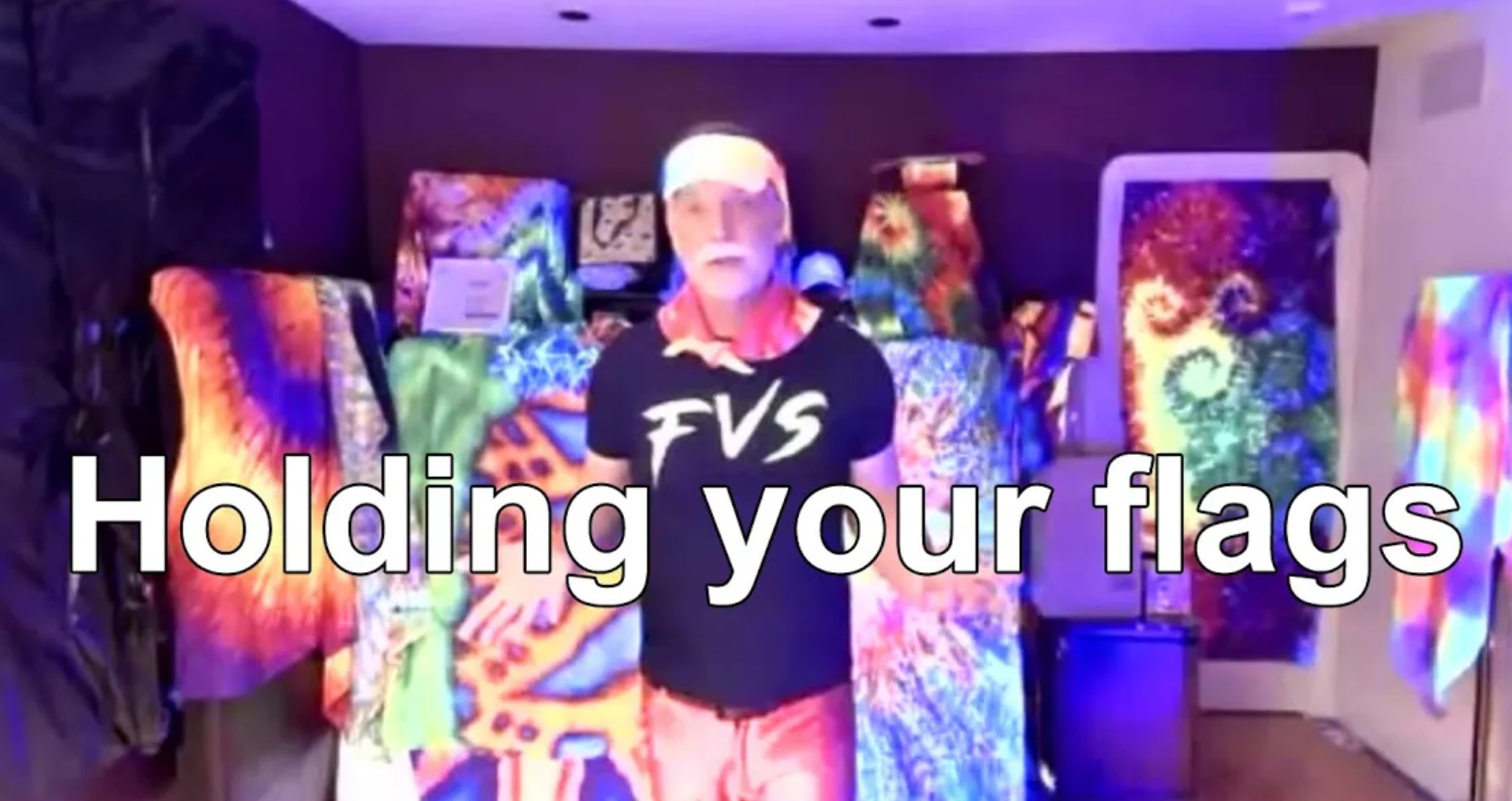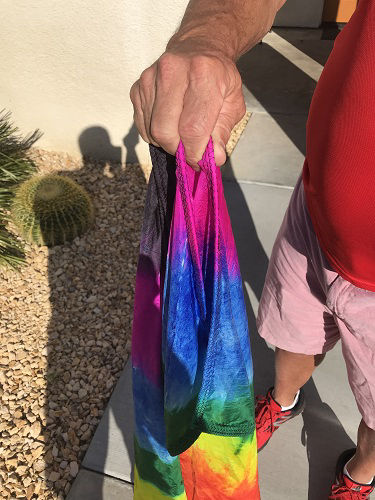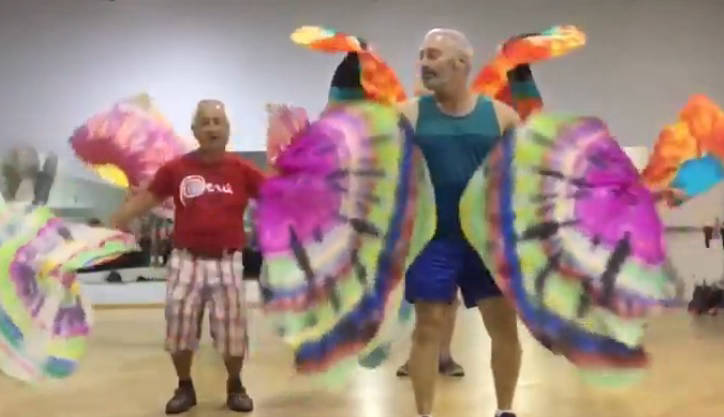Just a quick set of tips about flag care and how to properly hold your flags.
Click on the picture to see the video in a new window. CLose that window to return to here.

This is the movement that everyone can do right away.Pretend you are whipping a masochist who requested it
My palms are facing downward the whole time. The flags are moving downward toward the ground
creating an invisible figure 8. The flag tip draws a horizontal figure 8.
I do not need to flip my wrist very much (slight turn, maybe). My elbow stays near my stomach and I “bounce” my arm
The flags rely on momentum and not on my strength
Be sure to do this with both your dominate and your non-dominate hand. (Picky point) Flags should be symmetrical on both sides.
The key to this movement that the flags "follow" each otherThis can be done directly in front of you, to either side of you, or raised slightly
It is like "down" but with two flags
Flags are moving downward and forward toward the ground. Your palms are facing down the whole time.
The hand that is coming to the center is moving over the hand that is leaving and one hand "follows" the other. My elbow stays near my stomach and I “bounce” my arm.
The flags rely on momentum and not on my strength. Flags should be symmetrical on both sides
Stand upright - the forward lean in the videos is for clarity
https://www.youtube.com/embed/
A key technique when
joining two flags together in one hand (marry) and then being able to
later separate them back into individual flags (divorce?) is to place
your index finger between the two flags. You can still move them as a
single flag with one hand, but it is much easier to break them apart
while in movement.
Practice doing a simple double down and then
"marry right" so that both flags move to your right hand.
Perform a
single hand down and then break them back into two flags doing the
double down.
Now do the same thing with a "marry left"

A swoop can be a dramatic movement to match a high point in the music.
Not
all swoops have to be giant circles or particularly fast. If the music
is quiet or slow, you may slow the intensity. Notice when double swoop
happens, that creates more intensity and may indicate an increase in
energy.
The second video is in slow motion so you can more easily see the way the flags move from hand to hand.
This is like the overhead. But there are subtle differences. I am not
going overhead, but off to the side.
Vertical on my left and flat
(horizontal) in the front.
Think about throwing a frizbee.
From here, we can go to a couple of different
movements.
This is just an added movement.
Same actions as before, but you just added a spin and brought the flag around your neck.
The flag is flat (horizontal) in the front, vertical on sides.
As you
progress you can vary the vertical to come around your neck.
This movement is the basis for MANY different movements. To begin, hold your palm up, hold your elbow still and throw the
flag behind you, circle around the front and continue to hold your palm
up.
My palms are facing up the whole time.
The flags are moving upwards from the ground.
The flags create an invisible figure 8.
The flag tip draws a horizontal figure 8.
I do not need to flip my wrist very much (slight turn, maybe). My elbow stays near my stomach and I “bounce” my arm.
The flags rely on momentum and not on my strength.
(Picky point) Flags should be symmetrical on both sides.
Be sure to do this with both your dominate and your non-dominate hand.
The key to this movement that the flags "follow" each other.
This is a very strong movement that leads to many variations
.
It is like "Up" but with two flags
Flags are moving up and back from the ground.
Your palms are facing up the whole time.
The hand that is coming to the center is moving under the hand that is leaving and one hand "follows" the other.
My elbow stays near my stomach and I “bounce” my arm. The flags rely on momentum and not on my strength. Flags should be symmetrical on both sides
stand upright - the forward lean in the videos is for clarity
